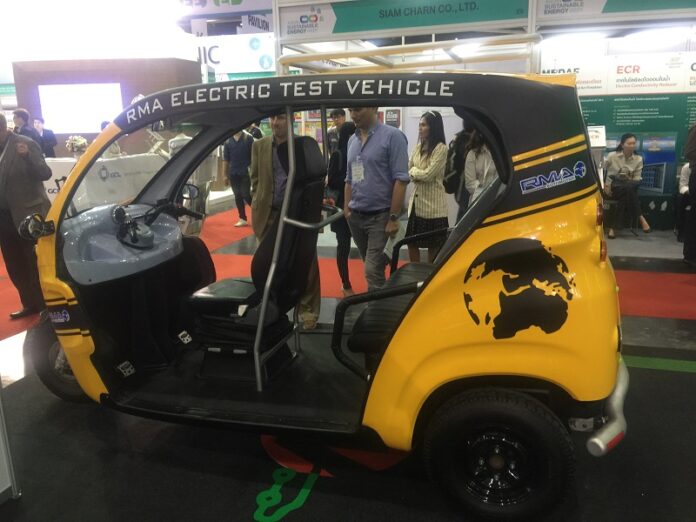
As I continue my look at different aspects of Thailand 4.0 and some of the challenges ahead for this initiative to become a reality, I want take a look at energy. It is what runs our aircon, powers our buildings and keeps the internet running. There is not much that can be done in a knowledge economy that doesn’t require energy. Increasingly, where that energy comes from is significant.
Energy is a big deal, and Thailand uses a lot of it. The country produces about a third of the oil it uses, and still needs to import more. Thailand is one of the largest producers of coal in the region as well – but must still import more to meet demand. This demand is going to rise as the Thailand 4.0 plan pushes forward. Reliance on imported energy sources can put a country at risk of economic instability if the market spikes or political tensions cause the energy spigot to shut down. This is where renewables can play a big role.
It’s not hard to see that if Bangkok is going to compete as a city of the future there will need to be some significant improvements in infrastructure and services. And despite some outages, Thailand’s power grid is by no means horrible. For the most part, it has 24-hour access to reliable power. All that being said, a shift to obtaining some more sustainable energy sources for the city would not just bolster infrastructure but would also help give the city a more supportable swag that may just help attract new and innovative businesses to the kingdom.
To be clear, my focus here is Bangkok. There are some unique challenges to creating solar capacity in an urban area. As for the rest of the country, we have to give credit where credit is due and Thailand leads the region in solar capacity – having more of it than the rest of Southeast Asia combined. But the vast majority of that capacity comes from rural areas far away from Bangkok such as the solar farms in Lopburi.
And while there are sufficient challenges to building solar capacity in urban areas, primarily finding the surface area to mount panels to collect the rays and energy storage, those urban issues are compounded by some other challenges very specific to tropical climates.
To find out more about the issues that solar energy faces in tropical regions, I spoke to assistant professor Siriroj Sirisukprasert, a power systems expert from the department of Electrical Engineering and Faculty of Engineering at Kasetsart University.
“In a tropical country such as Thailand, raising temperature at photovoltaic, or PV, panels play important role to their efficiency reduction. Temperature coefficient of maximum power is what you need to look for. Generally, PV panels are rated at Standard Test Conditions of 25 degrees,” he said. “The difference between the operating temperature and 25 degrees will tell you how low the maximum power will go. In Thailand, a 30 degree difference can be easily seen. That means a 12 to 15 percent reduction from its maximum power. To handle this concern, appropriated PV ventilation is needed.“
To simplify, most PVs are rated for 25 degrees, but in Thailand those operating temperatures can be significantly higher and that causes the panels to produce less electricity. Siriroj concluded by saying that “appropriate ventilation is needed”.
Ventilation is another one of the major challenges urban solar installations face. It’s much easier to get airflow around a valley full of panels when you can mount them as high away from the ground as needed, on a building, that is not an option in most cases.
Back in June I took a few days to visit the expos that were held at the Bangkok International Trade and Exhibition Centre, or BITEC, for ASEAN Sustainable Energy Week. The focus of the event was spread across renewable energy, energy efficiency, water and wastewater pumps and valves. All topics critical to the success of Thailand’s planned advancement into the future, known also as Thailand 4.0.
The main hall of the expo was split into two distinctive sections; one combining water and wastewater and the other focused on energy efficiency – primarily solar. The real issue with all of the solar panels on display was the lack of urban solutions. There were tons of great and innovative solutions for rural areas, emergency power kits – even some raised mounts for solar farm installations – but there were no options for urbanites.
Even when I recently visited the Techsuace global summit in Bangkok and met up with Rosalia Gitau, the chief operating officer of a solar energy company called Solevolt, they had a very slick and refined solar and storage solution, but it’s main focus was on rural not urban utilization.
And while I understand that rural installations are much less challenging, and the grid in some of these areas might be less stable, there is a more direct impact to the energy consumer. The larger, long term impact will be felt by finding sustainable energy capacity in the urban center: the business center of the future digital economy.
Thailand is already leading the region is solar capacity – and that’s fantastic. I hope to see the trend continue and to see it include urban solar projects that look to add both capacity and stability to grids as well as the economy.
















































